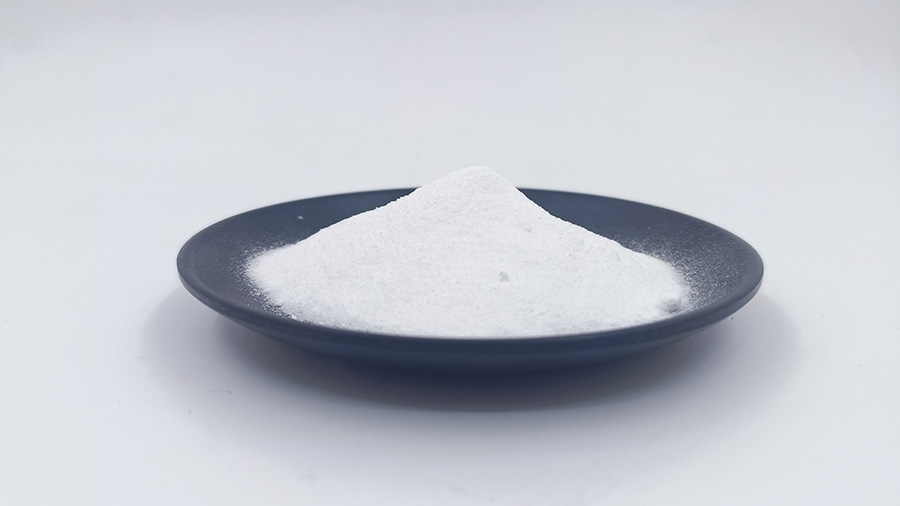
EDTA: The Double-Edged Sword of Chelation
The Ubiquitous EDTA: A Marvelous Chelator with an Environmental Shadow
In countless corners of our daily lives – from detergents removing grime and factories treating wastewater, to fields nurturing crops and even in medical test tubes – a compound called Ethylenediaminetetraacetic Acid (EDTA) plays an invisible yet crucial role. As one of the most widely used chelating agents in modern industry, EDTA weaves a vast application network with its powerful binding ability. However, behind its brilliance, the environmental cost is becoming increasingly apparent.

Characteristic: The Exceptional "Metal Hunter"
The core appeal of EDTA lies in its unique chelating ability. Its molecular structure resembles a flexible "four-armed octopus," possessing six coordination sites: four carboxyl oxygen atoms and two amine nitrogen atoms. This allows it to form multiple coordination bonds with positively charged metal ions (such as Ca²⁺, Mg²⁺, Fe³⁺, Cu²⁺, Pb²⁺, etc.) with extremely high affinity, generating exceptionally stable, water-soluble ring-shaped complexes (chelates). This stability far exceeds that of many natural ligands, and its broad scope of action makes it an unparalleled "metal hunter."
Uses and Applications: The Omnipresent Industrial Assistant
Leveraging this core capability, EDTA permeates numerous fields:
-
Industrial Cleaning & Water Treatment: In boiler and heat exchanger cleaning, EDTA chelates calcium and magnesium ions to soften water and remove scale. In textiles, paper, and dyeing, it masks metal ions, stabilizes bleaching processes, and enhances product quality.

-
Consumer Products: Added to detergents and soaps, EDTA chelates hard water ions, preventing them from interfering with surfactants' cleaning efficacy, resulting in richer foam and whiter laundry (though its use is decreasing due to environmental concerns).
-
Agriculture & Nutrition: EDTA salts of iron, zinc, etc., serve as micronutrient fertilizers, preventing metal ions from being immobilized in soil and significantly improving plant absorption efficiency. They are also used as mineral supplements in animal feed.
-
Medicine & Personal Care: EDTA is used as an anticoagulant in blood (by binding calcium ions); to stabilize drug components susceptible to metal catalysis; as an antidote for certain heavy metal poisonings (e.g., lead); and as a stabilizer and preservative booster in eye drops and skincare products.
-
Analytical Chemistry: EDTA titration is a classic method for determining water hardness (calcium/magnesium) and the concentration of various metal ions.
Environmental Shadow: The Persistence Dilemma
However, EDTA's very strengths – its exceptional stability and water solubility – become its critical environmental weaknesses:
-
Environmental Persistence: EDTA's complex and stable molecular structure makes it highly resistant to degradation in conventional biological wastewater treatment plants. Large amounts of undegraded or partially degraded EDTA and its metal complexes are discharged into surface water and groundwater via effluent.
-
Heavy Metal "Transporter": While EDTA can immobilize metals, its complexes with heavy metals (e.g., lead, cadmium, mercury) are typically highly water-soluble and mobile. This not only fails to effectively fix the heavy metals but may instead promote their migration and diffusion in the environment, increasing pollution spread and the risk of bioabsorption.
-
Nutrient Element Disruption: EDTA also strongly chelates essential elements like calcium and magnesium. Entering aquatic systems, it can disrupt organisms' utilization of these nutrients. Crucially, it may chelate phosphorus in sediments, causing its release back into the water column and exacerbating eutrophication and algal blooms.
-
Bioaccumulation Concerns: Although EDTA itself has low bioaccumulation potential, its persistence and role in enhancing heavy metal mobility indirectly increase the risk of heavy metals entering the food chain.
The Path Forward: The Rise of Green Chelators
Faced with EDTA's environmental challenges, developing environmentally friendly green chelators has become an urgent need and a significant trend:
-
Natural/Sourced Chelators: Sodium gluconate, sodium citrate, Tetrasodium Glutamate Diacetate (GLDA), Methylglycinediacetic acid (MGDA). These are typically derived from renewable resources (e.g., starch, sugar, plant amino acids), offer good biodegradability (can be rapidly decomposed by microbes in treatment plants or nature), low ecotoxicity, and moderate yet sufficient metal chelation capacity. The substitution of GLDA and MGDA in cleaning, consumer products, agriculture, and other fields is increasingly widespread.
-
Designing Better Synthetic Chelators: Examples like Tetrasodium Iminodisuccinate (IDSA) not only exhibit good biodegradability but also offer chelation performance (especially for calcium) that can surpass EDTA, coupled with a more environmentally friendly production process.
-
Application Strategy Optimization: Where chelator use is unavoidable, strict control of emissions and active recovery/recycling of chelators and metal resources from wastewater are essential.
Conclusion
EDTA, once a "universal key," unlocked countless industrial applications with its powerful chelation ability, profoundly shaping modern life. However, its environmental persistence and potential role as a heavy metal "transporter" have become a heavy burden on the ecosystem. Finding a path to reconcile with nature, vigorously developing and promoting readily biodegradable, low-toxicity, high-efficiency green chelators (such as GLDA, MGDA, IDSA, citrates, gluconates), and optimizing usage strategies are essential thresholds for industrial sustainable development. Only by finding a new equilibrium between high performance and environmental responsibility can we enjoy the conveniences brought by chemistry while safeguarding our blue planet – starting by changing a molecular structure, humanity will ultimately learn the chemical language of coexistence and mutual prosperity with nature.
Yuanlian Chemical specializes in the production of polyaspartic acid (PASP),tetrasodium iminodisuccinate(IDS), GLDA, MGDA etc. with stable quality and excellent quantity!





Contact us